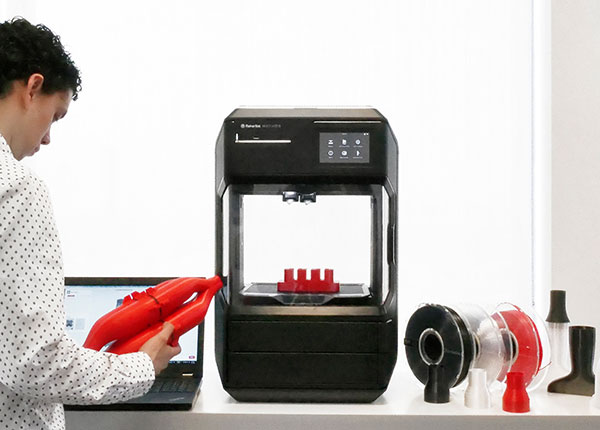MakerBot Expands METHOD 3D Printer Materials with Durable and Chemical-Resistant PETG
The first material for the MakerBot METHOD 3D printer in the Specialty Material line, PETG promises superior part durability and chemical resistance.

PETG Specialty Material will be shipping to MakerBot METHOD users in June 2019. Image courtesy of MakerBot.
Latest News
May 23, 2019
MakerBot has expanded its 3D printing materials offering with polyethylene terephthalate glycol (PETG). It is the first Specialty Material to be released for the MakerBot METHOD 3D Printer. METHOD Specialty Materials are designed to provide advanced material properties for engineers who demand higher performance.
“Our customers have been asking for different materials to use for a wide range of applications that require high strength and durability,” said Nadav Goshen, CEO, MakerBot. “PETG is one of the most widely used polymers today. Because of its advanced properties and versatility, we view PETG as an excellent material to be used on the manufacturing line and for short-run production runs.”
Engineers and designers use 3D printable parts made of PETG to withstand industrial applications, including functional prototypes, jigs and fixtures, and end-use parts. The industrial-grade material has a heat deflection temperature of up to 70°C and strong layer adhesion designed to reduce shrinkage and warping during printing, according to MakerBot. PETG is resistant to moisture and many chemicals, including some alkali and acidic substances. It can be used with METHOD’s water-soluble PVA for complex parts and effortless support removal.
The company says PETG has greater strength and flexibility qualities than other materials, such as PLA and ABS, and is odorless when printing. Further, the material prints with a glossy finish and has a good degree of ductility.
METHOD Specialty Materials are intended for users looking for advanced material properties. They provide basic print performance and can require additional workflow steps to print successfully. PETG requires the application of an adhesion stick to the build plate prior to printing.
MakerBot also has a line of Precision Materials that are the primary materials developed for METHOD and cover the majority of use cases for prototyping, jigs and fixtures, and end-use parts. These materials currently include MakerBot Tough, MakerBot PLA, and MakerBot PVA.
PETG is now available to purchase and expected to begin to ship to customers in late June.
Sources: Press materials received from the company and additional information gleaned from the company’s website.
More MakerBot Coverage
More Stratasys Coverage
Subscribe to our FREE magazine, FREE email newsletters or both!
Latest News
About the Author
DE’s editors contribute news and new product announcements to Digital Engineering.
Press releases may be sent to them via [email protected].





